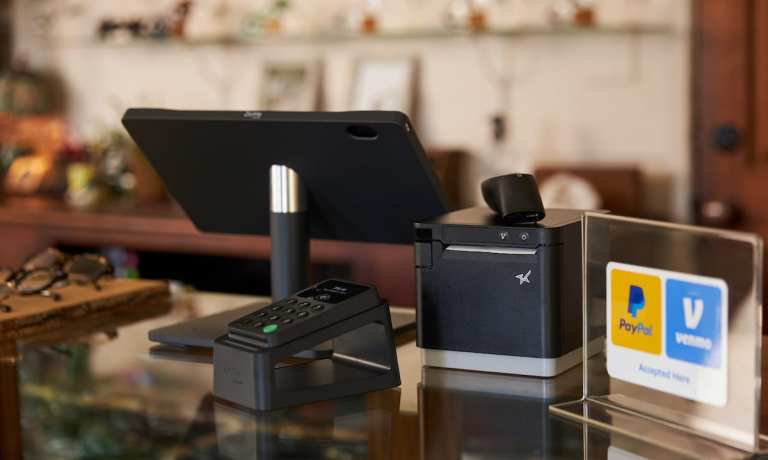PayPal Zettle US Launch Brings ‘Commerce In Box’ To SMBs

When PayPal first announced its planned acquisition of Zettle three years ago, CEO Dan Schulman touted the firm’s shared “mission, values and culture” and the emerging opportunity for PayPal to become “a global one-stop solution for omnichannel commerce” for firms of all sizes.
Fast forward to today (June 30), and PayPal is pushing forward with that expanded opportunity, and has announced the launch of PayPal Zettle for small businesses in the U.S., a digital POS solution designed to help small businesses manage sales, inventory, reporting and payments across all channels and in one place.
In addition, the new POS offering will also allow merchants to accept QR codes, debit cards, credit cards and popular digital wallets.
As PayPal’s SVP of Omni Payments Jim Magats told Karen Webster shortly before the news went public, the goal is to offer merchants of all sizes the ability to meet their customers wherever they are and sell to them seamlessly, in-person and across digital channels.
“For us, it’s a natural extension of what we’ve been doing online and on mobile over the course of the last 20 years; serving SMBs with an in-store solution that interoperably works with an online solution. It’s the next stage of our evolution into omnichannel payments,” Magats told Webster.
Creating Commerce-in-a-Box
The trouble many SMBs face in an increasingly omnichannel world is fairly obvious to anyone who has ever put in an online order at a local shop, only to arrive and find out that the online inventory information was out of sync with the in-store reality, and what you thought you had ordered and paid for, actually isn’t available.
This isn’t the fault of small merchants, Magats noted. The opportunity to sync inventory management and product management in an interoperable omnichannel manner is something that doesn’t really exist today at scale in the market.
Merchants that are particularly committed can cobble something together by connecting a bunch of different platforms to enable online/offline transactions, taking on another integration to accept QR codes, followed by yet another host of integrations for things like inventory management, invoicing and working capital management.
None of these solutions are things small business owners want to spend a lot of time stitching together, Magats said. The POS system launching today is designed to bring all of those things under a single banner where a merchant can easily see and manage them as a single, unified whole.
“When we say, ‘small business in a box,’ we mean that it really simplifies running the business, so they can focus on getting more customers to their storefronts,” Magats said, noting that entrepreneurs are people with a passion around a specific area – not inventory management or cash flow optimization, but rather dealing with customers and creating new offerings. Operational functions “mostly get in the way” of developing and scaling their businesses, he noted.
With PayPal Zettle, PayPal aims “to take all these point solutions, bring them together and then curate them, so that business owners can operate in a much more configurable, easy way,” said Magats.
The QR Code and Leaning Into the Local Customer
Beyond rolling out an integrated omnichannel solution, the newly launched POS offering allows merchants to take QR code payments, specifically from PayPal and Venmo customers, without a separate integration.
“What we think is most interesting is the opportunity to take our consumer side of our business and activate them,” Magats said.
Venmo customers, he noted, are particularly local – the circles of people they pay via the service all tend to be within a close geographic proximity. The ability to bring those customers into local businesses and have those payments appear on consumers’ feeds presents an entirely new take on leveraging social commerce in local contexts.
It opens up an opportunity to leverage those large customer bases to really become local commerce influencers that visit locations and merchants they might not have otherwise been exposed to, Magats noted.
“At PayPal, we’ve always talked about being a conversion driver, getting new consumers or consumers who ordinarily wouldn’t shop at a merchant,” he said. “And we’ve got amazing two-sided tools to be able to activate those customers.